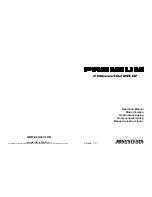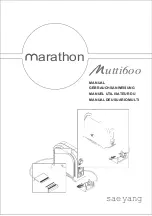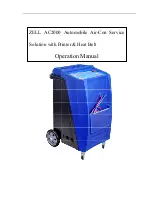
Chapter 1
1-2
BiPAP Vision Service Manual © Respironics, Inc.
1062788
Introduction and Intended Use
1.1 Service Notice
Read this manual thoroughly prior to performing service or maintenance on the
BiPAP Vision. This manual contains advanced troubleshooting, calibration, and
maintenance instructions. All maintenance and repair work should be
performed by qualified biomedical technicians who have received appropriate
training and authorization to provide maintenance, repair, and service for the
BiPAP Vision.
1.2 Tools and
Equipment
Table 1-1 lists the recommended tools, test equipment, and materials required
to service and maintain the BiPAP Vision.
Table 1-1: Service Tools and Equipment
Description
Manufacturer and model
Common hand tools:
• Flat-blade screwdrivers, small (long shaft)
and medium
• Phillips screwdriver, medium
• Nut drivers, 1/4-in., 5/16-in., 11/32-in.,
and 7/16-in.
• 1/4-in. wrench
• Needle-nose pliers, medium
Local supplier
Antistatic workstation, including grounded
mat and wrist strap
Local supplier
Electrical safety analyzer
• Earth resistance:
Range 0 to 19.99 ohms.
Resolution 0.01 ohms.
Ac 5% + 1 digit.
• Leakage current:
Range 0 to 19.99 uA.
Resolution 1 uA.
Ac 1% + 1 digit (2.5 to 1 kHz);
+ 1 digit (1 kHz to 1 MHz
• Dale Model LT544D
• Any commercially available electrical safety analyzer
that meets these specifications
Digital manometer
• Range of at least 0 to 40 cmH
2
O
• Accuracy of at least + 1.0% of reading.
• Certifier FA Plus Ventilator Gas Analyzer with high-flow
module and oxygen sensor kit (P/N 1040311)
• Certifier FA Plus with high- and low-flow modules and
oxygen sensor kit (P/N 1040312)
• Any commercially available digital manometer that
meets these specifications.











































